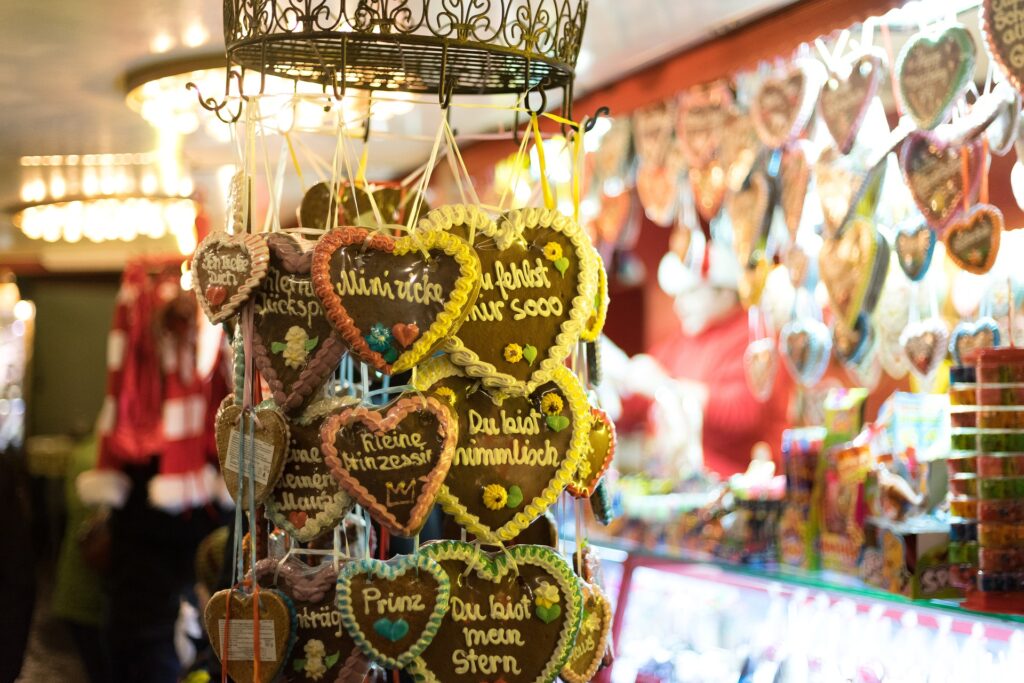Christmas markets
Christmas came with the pre-Christmas season, and with it came the famous Christmas markets, which originated in German-speaking countries, but can now be found almost everywhere.
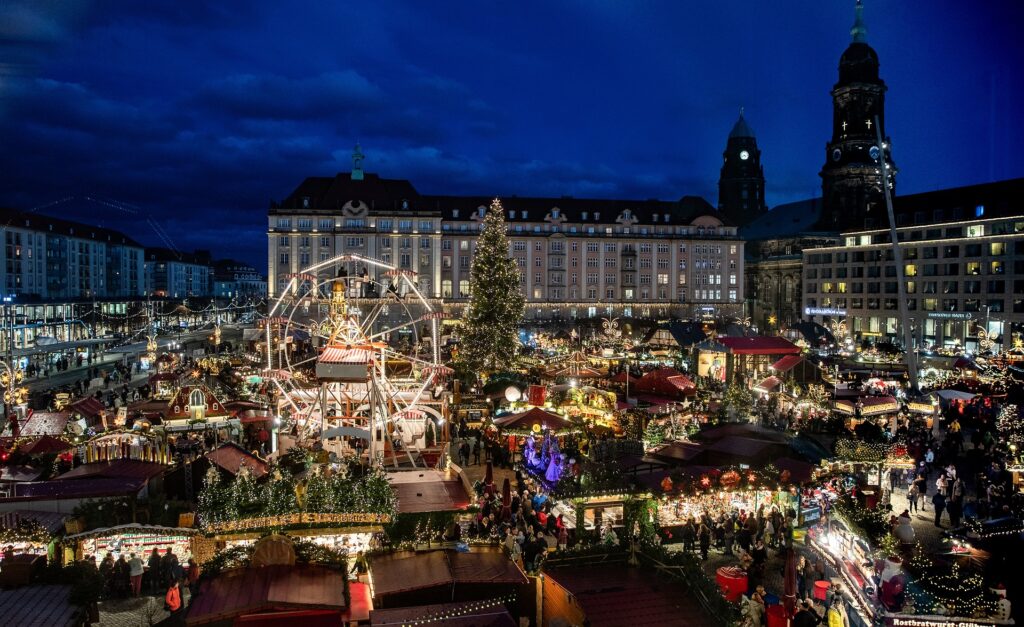
Each market has its own peculiarities, from its history to the setting in which it is set up, from the local food and craft products that can be purchased to the elements that enliven it: concerts of Christmas music, displays of nativity scenes, ice skating rinks, etc.
A bit of history
In 1296, the merchants of Vienna obtained from Duke Albrecht I of Austria the privilege of holding a “December market” to supply the Viennese population: documentary evidence indicates that the first Christmas market opened its doors in Vienna under the name “December Fair.”
In 13th-century Germany, there were pre-Christmas fairs where visitors stocked up on winter goods that later became a gathering place for people during Advent. First mentioned in 1384, the Bautzen Christmas market is probably the oldest in Germany.
The 17th century saw the emergence of traditional Christmas markets in German-speaking countries, very similar to those of today, which were set up near churches under the name of St. Nicholas markets, being organized around the saint’s feast day (Dec. 6). With the Protestant Reformation (1517) and the consequent abandonment of saint worship, the markets took the name Christkindlmarkt, or market of the Child Jesus.
Older appear to be those in Bautzen (first held in 1384), Frankfurt (first held in 1393) and Munich (1310). Vienna‘s December market, a kind of precursor to the Christmas market, dates back to 1294. Other historic markets include those in Salzburg (1491), Strasbourg (1570) and Nuremberg (1628).
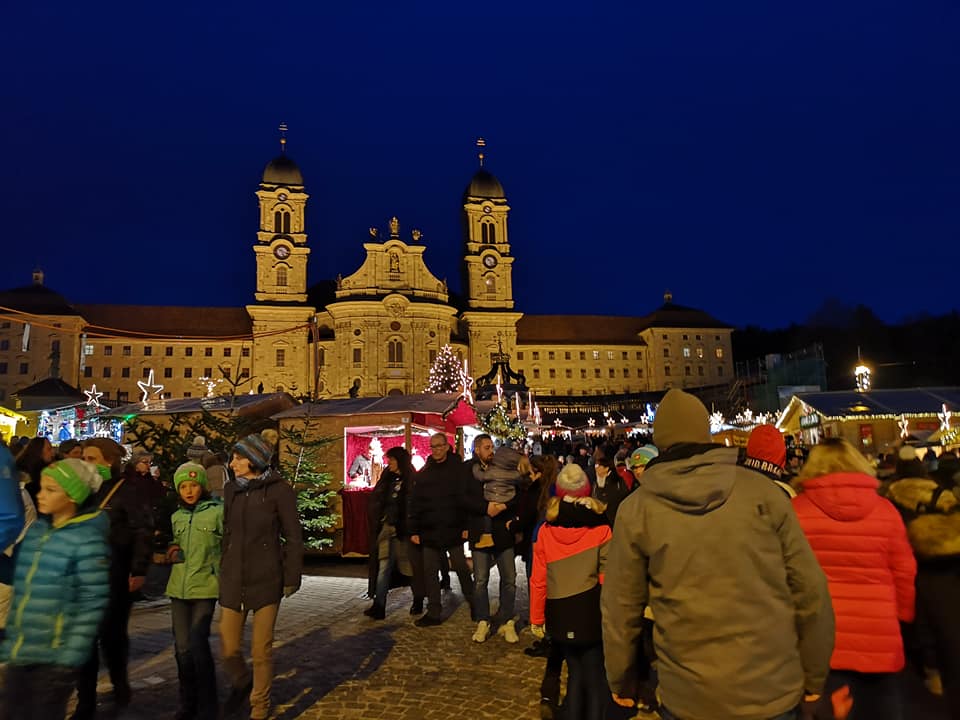
Period
For some years now, the start of the Christmas markets has moved to November, arousing some controversy from the Protestant Church since, the Sunday before the Advent season they observe the Sunday of the Dead, one of the silent days of the year. Compromises have been agreed upon to remedy the problem, such as keeping the markets already open on the Sunday of the Dead closed.
Smaller Christmas markets open only for a few days, on one or even several weekends during Advent. At Christmas, most Christmas markets are already closed.
The night of St. Lawrence between traditions and legends
Christmas market
A typical Christmas market consists of numerous stalls in the streets and squares of a locality, and Christmas baked goods and regional specialties such as Berlin pancakes, Christstollen (a typical German Christmas cake, which has been known since the 14th century and originated in the Dresden area), various sweets such as chocolate figures, cotton candy, roasted almonds, hot chestnuts and hot food are offered. Hot drinks such as mulled wine, Feuerzangenbowle (a traditional German alcoholic beverage, often prepared at Christmas time and for the arrival of the New Year) are also served to warm up , Glühmost (a hot alcoholic beverage made from must) and Punch (a rum-based alcoholic cocktail particularly flavored due to the presence of numerous spices), as well as other drinks.
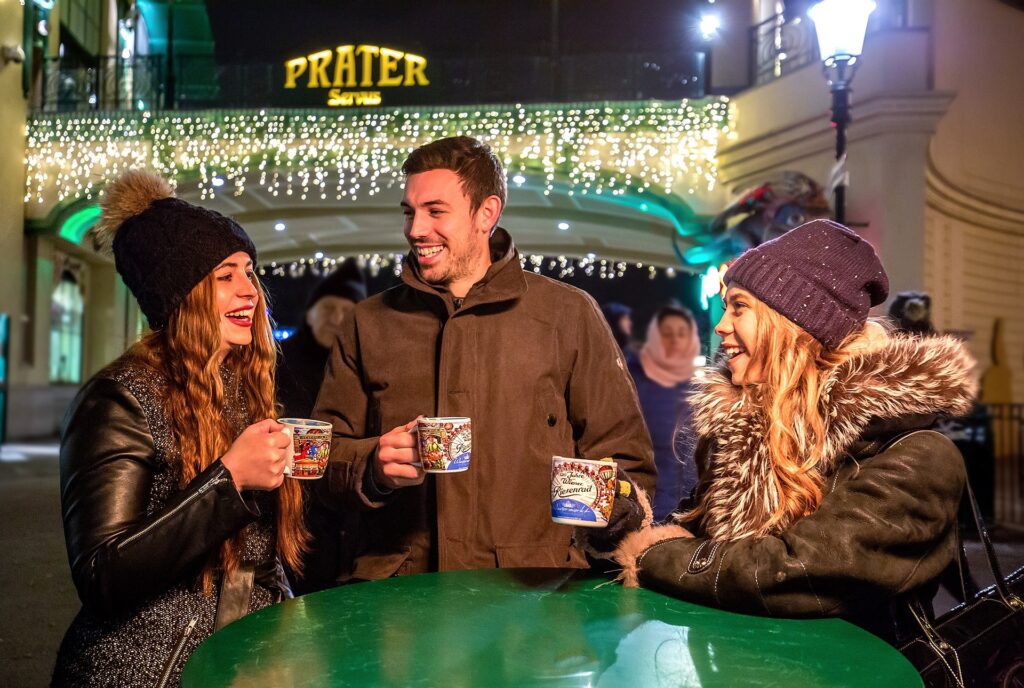
Some famous Christmas markets
Rothenburg od der Tauber – Germany
Rothenburg ob der Tauber is a Bavarian town considered one of the most beautiful medieval cities in Germany. For more than 500 years, almost nothing has changed inside the nine-meter-high city walls-a dream for fans of history and the Middle Ages. The Christmas market called “Reiterlesmarkt” is particularly romantic and has been held since the 15th century, during Advent. Rothenburg is also home to the German Christmas Museum, which is open year-round. On Fridays and Saturdays you can enjoy the view from the town hall tower.
Salzburg-Austria
Several Christmas markets are held in Salzburg: The Christkindlmarkt in the Domplatz and Residenzplatz are world famous, with more than 100 stalls. Mozart’s hometown is all about music during the holidays with an extensive concert program. On the outskirts of Salzburg, in Oberndorf to be precise, on the night of December 24, 1818 during the Christmas Mass in St. Nicholas Church there was the first public performance of the piece Stille nacht, heilige nacht, (Silent Night, Holy Night in English) performed by its two composers with Mohr and Gruber.
Colmar – France
Alsatian Christmas markets offer a special atmosphere in the town’s historic center, which, is magically illuminated and decorated.
The predominantly pedestrian city center is home to numerous architectural treasures, especially monuments, churches, museums and narrow streets built from the Middle Ages to the 19th century for the city’s most powerful people. Don’t miss the Pfister House, the Koïfhus, the Unterlinden Museum, the Little Venice, the Cape House, and St. Martin’s Collegiate Church.
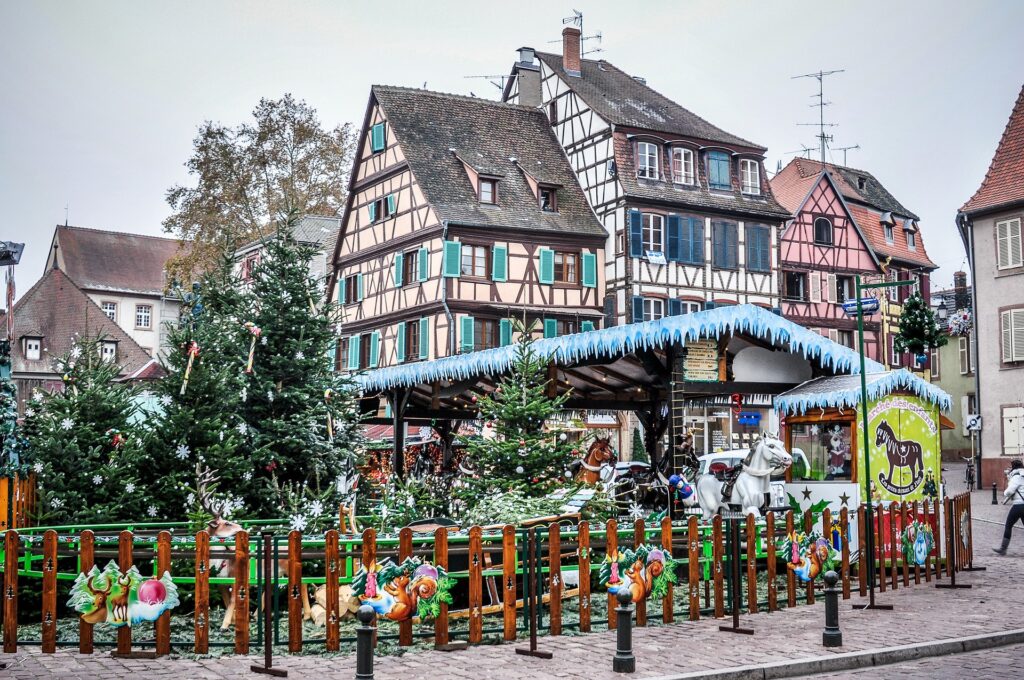
Dominican Square
The elegant Dominican church dominates the marketplace and is made even more sublime after dark by its remarkable stained glass windows. These expertly lit 14th-century works of art add a special charm to this historic square, now a must-see stop on any visit to Colmar.
Jean d’Arc Square
With its huts, church and herd of goats, Colmar’s Christmas market in Place Jeanne d’Arc creates the family atmosphere of a traditional Alsatian village. Genuine regional products can be found here. You can choose from many delicacies: Alsatian specialties, foie gras, delicatessen, schnapps, Winachtsbredele or even gingerbread…
Old Douane Square
This square, in the heart of the city, is home to the sculpture Schwendi Fountain, created by Auguste Bartholdi. During the Christmas season, more than fifty harmonious and elegant huts find their place among one of the city’s most beautiful canals.
After sunset, you can enjoy a wonderful spectacle: The Koïfhus building lights up in bright colors, giving this old customs house and its Christmas market something magical.
Colmar Christmas market in the Koïfhus building.
Here one can admire and purchase numerous creations by local artisans, heirs to the skills of an entire region. On the second floor is the Toy Museum.
Colmar Christmas Market in the Petite Venice district.
The original arrangement of half-timbered houses on both sides of the Lauch River gave its name to this emblematic district of Colmar, which at Christmas turns into a veritable paradise for children who can catch a glimpse of rabbits or sheep hiding behind one of the wooden huts, or observe the mechanical cribs, take a ride on the merry-go-rounds or leave a letter in Santa’s giant letterbox, which among other things can be met in these avenues.
August 15 holiday with different traditions
Zurich – Switzerland
The markets in the city of Zurich, called Wienachtsdorf, and the region around Lake Zurich are particularly varied and welcoming: a wide range of gift ideas enchants visitors at the beautifully decorated stalls, but of course the punch for the little ones and mulled wine for the older ones, as well as hot dishes such as raclette and fondue, are not to be missed when strolling through the Christmas markets.
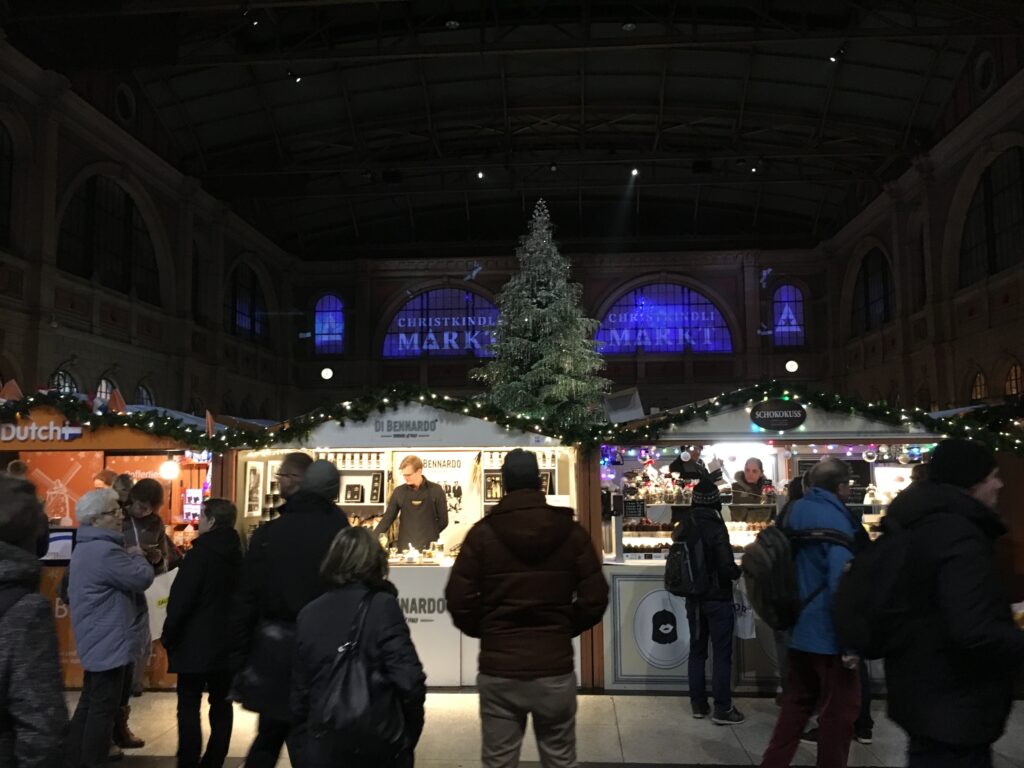
Christkindlimarkt central station
In Zurich’s central station, one of the largest covered Christmas markets in Europe takes place: This is where the 15-meter-high Christmas tree decorated with Swarovski stones is installed, which this year has reduced lighting to help save energy but, visitors to make it brighter can pedal the electric bicycles installed around it.
Dörfli Christmas Market in the Niederdorf
This Christmas market is the oldest in Zurich and takes place in the center of Niederdorf, as a part of the old town is called, and features numerous stalls spread along Niederdorfstrasse, across Hirschenplatz and up to the Grossmünster.
Wienachtsdorf Christmas Market
Sechseläutenplatz, just a short walk from Lake Zurich, is home to one of the city’s largest Christmas markets with about 100 stalls forming a Christmas village in front of the spectacular backdrop of the opera house.
Münsterhof Christmas Market
Under the motto “From Zurich to Zurich,” visitors will find local and high-quality products in adjacent boutiques. The market also hosts a cultural tent offering atmospheric concerts, readings and workshops for children and adults.
The singing Christmas tree and the “Wiehnachtsmärt”
Strolling along Bahnhofstrasse one encounters the Christmas market at Werdmühleplatz a cozy oasis that has long since entered the hearts of Zurich residents probably because of the “Singing Christmas Tree” i.e., a stage in the shape of a Christmas tree, as tall as a house where the various choirs of the region offer their Christmas repertoire.
Nuremberg – Germany
The Christkindlesmarkt in Nuremberg is considered one of the most famous Christmas markets in the world. The children’s light parade has been held since 1948 and is a must-see.
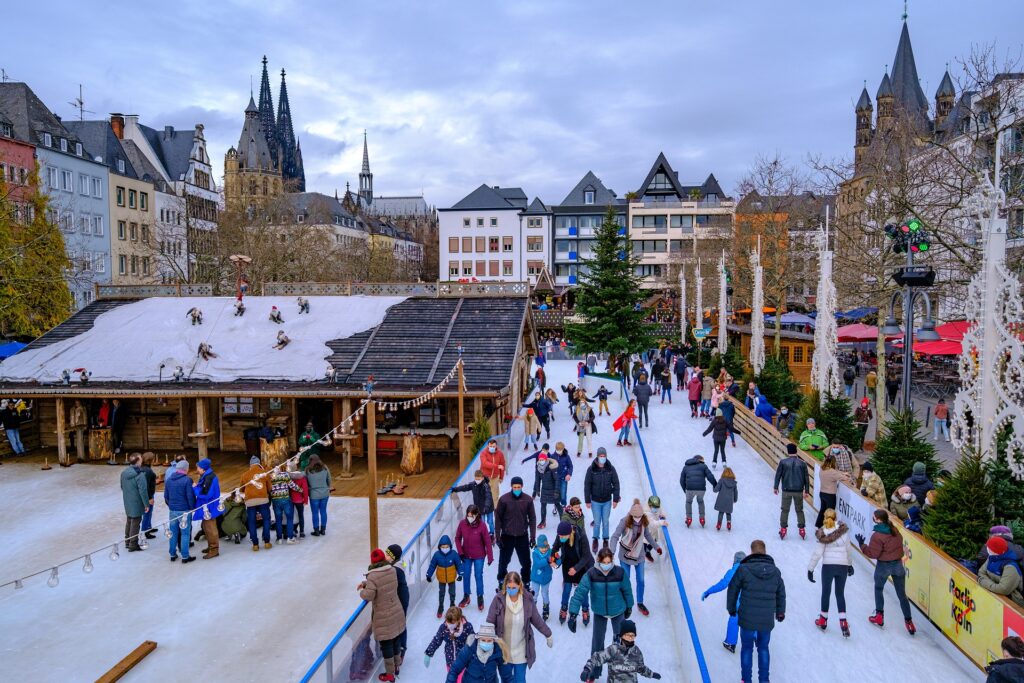
Dresden – Germany
A must for sweet tooths is Dresden’s Striezelmarkt, devoted entirely to Christmas stollen. On the second Sunday of Advent, the Stollen Festival takes place here, where a giant stollen is baked and cut in a festive ceremony.
Einsiedeln – Switzerland
This market, located in front of Einsiedeln Abbey, is particularly atmospheric and has a special charm with its decorated stalls, Christmas lights and large Christmas tree on the monastery square.
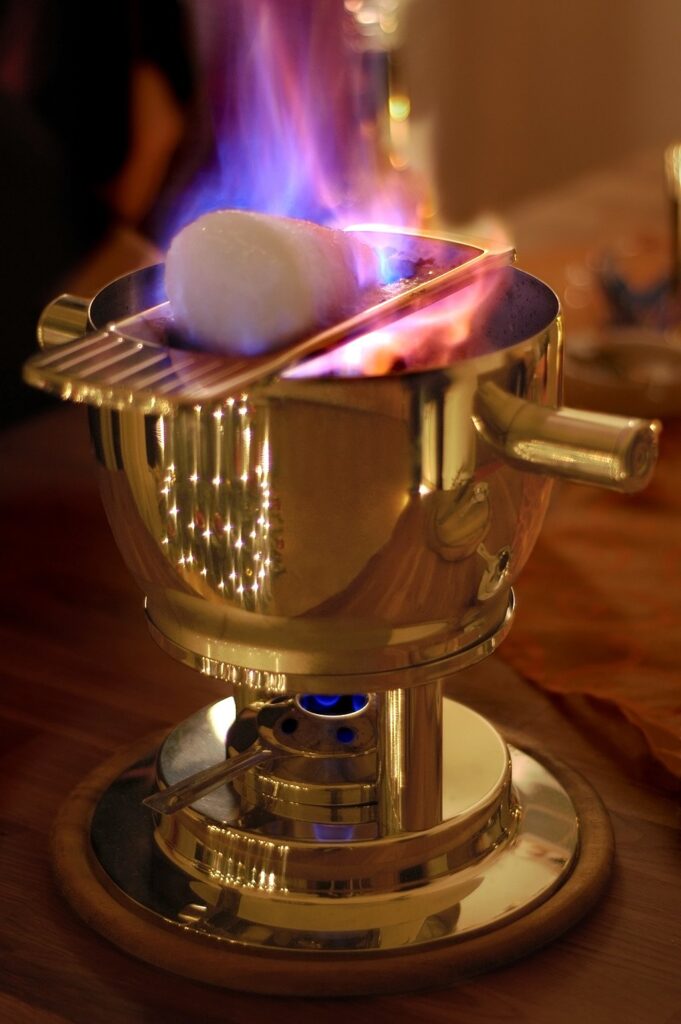
Munich – Germany
In this city, what are considered the most characteristic Christmas markets in Germany are held. There are several but the most famous ones are:
Münchner Christkindlmarkt am Marienplatz
This traditional market, which has its roots in the 14th century, is considered the original among Munich’s Christmas markets located in front of the neo-Gothic town hall at Marienplatz. Everything needed for a real nativity scene can be found here and it is referred to as probably the largest nativity market in Germany.
Tollwood – the winter festival
The Tollwood Winter Festival bathes Ludwigsvorstadt’s Theresienwiese in atmospheric light. Typical of the alternative Christmas market is the mix of delicious organic food and many original arts and crafts at the “Market of Ideas.” Most of the events, ranging from theater and music and performances to environmental activities and a varied children’s program, are free. The entire festival then concludes with the traditional New Year’s Eve party.
Weihnachtsdorf im Kaiserhof der Residenz
The cabin located in the center of the village with a small chapel with a life-size nativity scene inside is the most famous attraction of this market where, every year live music programs are held daily.
For children, there is a private fairy-tale forest, a puppet theater and a visit from Santa Claus himself who arrives on a sleigh with a team of reindeer.
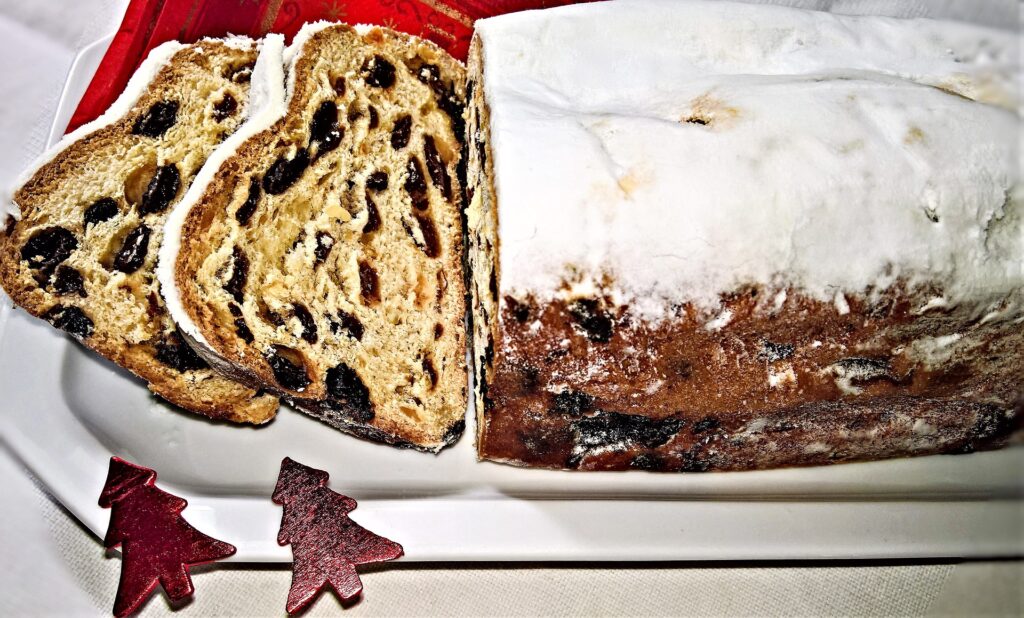
Vienna – Austria
From mid-November, Vienna’s squares are transformed into magical Christmas markets: at Rathausplatz, a meter-high archway with candles welcomes visitors who can find Christmas gifts, Christmas tree decorations, arts and crafts, culinary delights, sweets and warming drinks. At Christkindlmarkt’s Ice Dream, ice skaters can take their turns in the romantically lit Rathauspark. A special attraction for lovers is the Herzerlbaum (heart tree). For children there is a 12-meter-high multi-story merry-go-round and a Christmas world in the park with a reindeer train, a crib trail, a children’s hut, and an ice rink.
Prague – Czech Republic
Between the Old Town Hall and the two-towered Tyn Church is Prague’s traditional Christmas market. Particularly popular at are the life-size nativity scene, zoo, children’s carousel and a large stage on which a colorful music and folklore program that changes daily during the Advent season can be seen.
Bolzano – Italy
Established in 1991, it is considered the first Christmas market in Italy, which was followed by others in the Südtirol area, in Merano, Bressanone, Vipiteno and Brunico. The market features more than 80 exhibitors offering typical South Tyrolean handicrafts: hand-carved nativity figures, tree decorations made of glass, wood and ceramics, candles and many gift ideas under the banner of the most genuine South Tyrolean handicraft tradition, as well as food and wine specialties and delicious typical Christmas sweets such as the famous “Zelten” from Bolzano.
